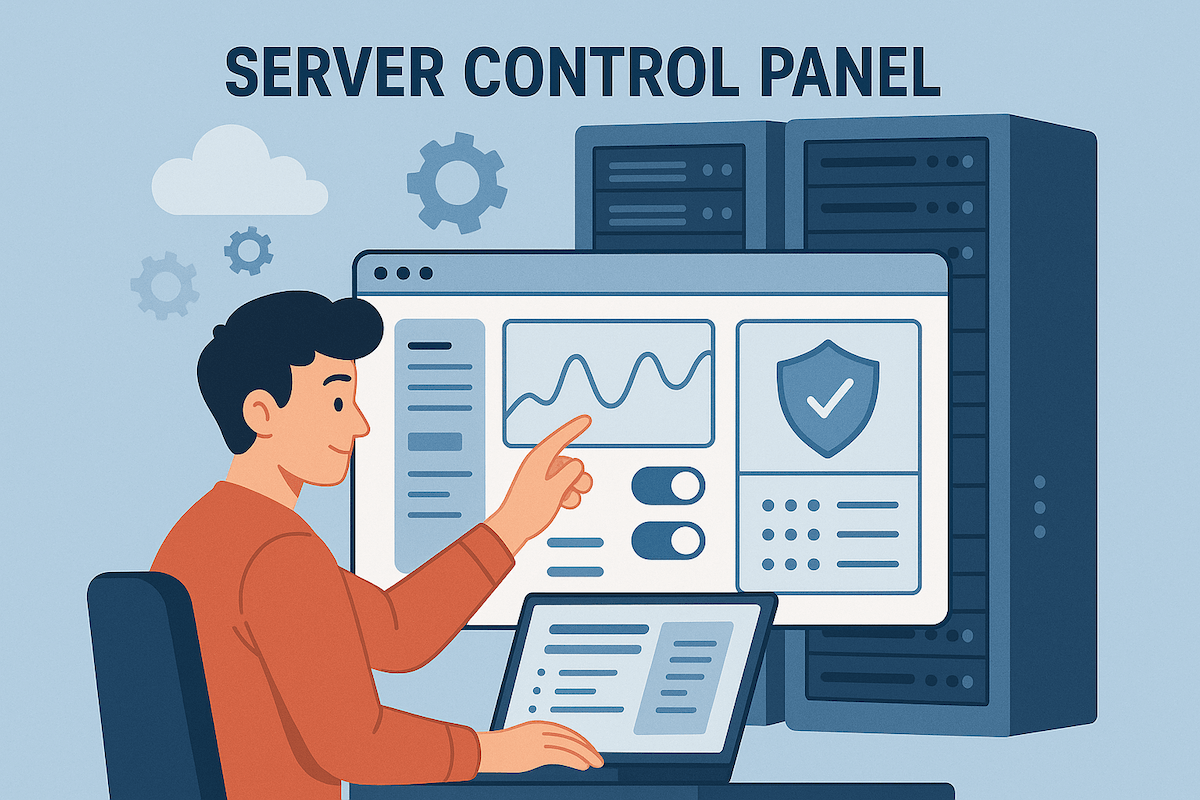Free VPS control panels — 5 best solutions

For full control over your web project deployed on a VPS server, the most convenient option is to use VPS control panels. These provide a graphical web interface for easy remote management and server configuration. Of course, you can also use the command line as an alternative, but that requires more time and in-depth knowledge of technical commands.
So, let’s take a look at the best free VPS control panels.
What is a VPS Control Panel For
When hosting a website, two options are most commonly used:
- Hosting from a provider. Convenient and inexpensive, but in this case, the web control panel for managing the virtual server is chosen by the service provider. Its functionality is not suitable for deploying complex web projects where the administrator needs full control over the server. It is mainly suitable for hosting and administering simple websites.
- Renting a VPS (Virtual Private Server). A more flexible and functional option. In this case, the client gets access to a remote virtual computer and can install any operating system or software on it. Administrator rights are also provided. The client installs and configures the web panel independently. Suitable for websites of any size and complexity.
The choice of VPS control panel depends on the tasks assigned to the virtual server. Its use provides the following features and benefits: more convenient server setup and management, automation of routine tasks, organization of multi-user environments, secure remote access. VPS control panels also simplify scaling — within one machine you can host multiple websites, subdomains, FTP networks, etc.
Essential Control Panel Functionality
To be useful, a VPS control panel must meet certain criteria. The basic functionality you should expect from free options includes:
- domain and DNS management;
- built-in file manager;
- management of hosts or websites;
- database management (MySQL, PostgreSQL);
- FTP and SFTP access management;
- email handling (mailbox registration, sorting incoming messages);
- backups;
- resource and server monitoring;
- user profile management;
- support for web servers (Apache, Nginx);
- secure access (encryption, two-factor authentication, firewall);
- automatic updates.
Of course, the more functions a server control panel supports, the better, but the stability of the software used also needs to be considered.
Popular Free Solutions
There are many free VPS server control panels. Some of them are universal and designed for a wide range of tasks, while others are more specialized, tailored for specific web projects or hosting. So, which free server control panels are considered the best among users?
HestiaCP
This is an improved version of VestaCP with open source. It has a minimalist interface, supports newer versions of PHP and web servers. It also works with Let's Encrypt and offers a Ukrainian interface. Another unquestionable advantage is the large community, so solutions to most problems are already documented on the forum. The drawback of this free hosting panel is the lack of built-in Docker or Node.js support, but not everyone needs that. For managing 1–2 websites, this is the best option among both free and paid alternatives.
CyberPanel
CyberPanel is a convenient free hosting control panel that runs on the OpenLiteSpeed web server. It offers one-click WordPress installation, Docker, Git, FTP, SSL. The free version is sufficient for most users. Downsides — at least 1 GB of free RAM is required, and customization options are limited.
BrainyCP
This panel from Ukrainian developers can be called the Swiss army knife of control panels. It allows you to configure almost any server parameters. But that is also its drawback, as it makes the panel very "monstrous." If you only need to manage one or two websites, most features will be excessive. The huge number of menu items can confuse beginners just as much as the command line.
Webmin+Virtualmin
This is a more technical VPS panel that consists of two independent solutions. Webmin is used for system administration of a remote server, while Virtualmin is used for hosting management. The main advantage is the extensive functionality, providing full access to the virtual machine. It can be used for resellers and servers. Downsides: not suitable for beginners, and the interface is quite complex to master.
ISPConfig
Another free open-source VPS panel, developed by German developers. It supports multi-user environments, allows management of multiple servers from a single interface, and has good community support and documentation. The only drawback is its outdated interface, but it uses little RAM.
Criteria for Choosing a Control Panel
Before installing free VPS control panels, you should consider the following selection criteria:
- the needs of the project being deployed on the virtual server;
- the technical capabilities of the VPS — some panels require more free disk space and RAM;
- support for modern security technologies: SSL, firewall, cloud backups; also pay attention to update frequency;
- supported interface languages;
- flexibility of settings, plugin support;
- community support and available documentation.
If you analyze all the criteria, choosing a hosting control panel becomes much easier, as it will be adapted exactly to your functional needs. At the same time, you should not neglect the opportunity to test several options and only then choose the best one.
Thus, free VPS control panels are an excellent alternative to commercial solutions like cPanel. With their help, you can quickly set up a remote server, hosting with a database, mail, backups, and other functionality without extra costs. And it is important to remember that regardless of which panel you choose, regular updates, backups, and security monitoring are the key factors for uninterrupted VPS operation.
Virtual and dedicated servers from our company XServer are a guarantee of stability and performance at affordable prices. We offer hosting of web projects in Ukraine, the USA, and Europe. We prepare servers of any configuration, as well as according to the client’s technical requirements, with the ability to quickly install systems both automatically and from ISO images and other software.